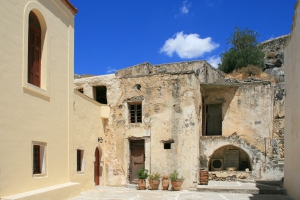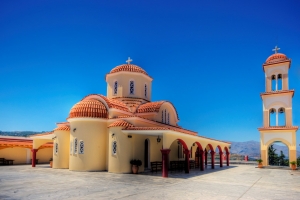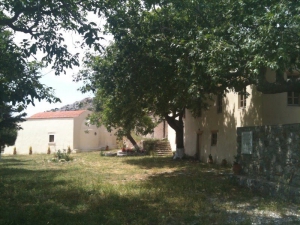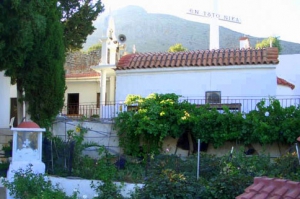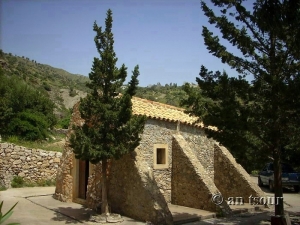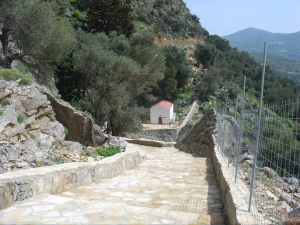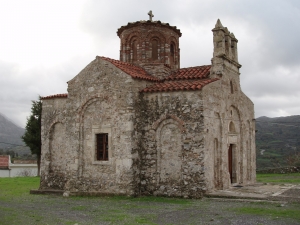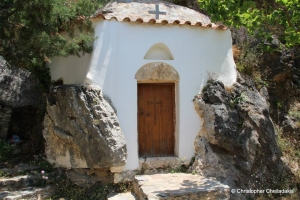The monastery of Preveli (or Prevelis) includes two separate monasteries which are located 1.7km from each other, the Kato (Lower) Monastery of Prodromos and the Piso (Back) Monastery of Theologos.
On the hill of the Episcopacy (seat of Diocese) of Lambi, Sivritos and Sfakia, in early 1990s, started operating the monastery of Saints Raphael. The main temple is dedicated to the martyrs Saint Raphael, Nikolaos and Irini. The monastery also hosts the chapels of Saint Irinaeus, Saint John the Baptist, Saint John the Hermit and Archangel Michael.
The Monastery of the Agio Pnevma (Holy Spirit) was probably founded in the 12th century and certainly at the end of Venetian rule it was already autonomous and in welfare. On June 15, 1821, the local Turks massacred the monks and burned the monastery.
The Holy Monastery of St. Anthony is located at position Katevati, 6 km from the village Akoumia, at an altitude of 525m. To reach the monastery you must travel 15 minutes by car on a dirt road from Akoumia.
The church of St. George at Finokalis was the temple of a nunnery founded in the 14th century, which seized its operation in the 1980s. Impressive is the slope of the walls of the temple, which would have collapsed by a landslide if not supported. The church bears valuable frescoes of the 14th century.
The now deserted monastery of St. Onoufrios is built on a steep ravine with vertical cliffs, next to a spring with cool water. Around the cavernous church we see the derelict cells of the monks. The church celebrates on 12 June.
The church of Panagia Lambini is a tetrastyle cruciform church (11th-12th century) with a dome and a very impressive bell tower. The imposing church functioned as a Diocese of Lambi, while in 1950 the locals identified on a frescoe of the Virgin Mary the surname Lambini (shining).
On the mountainside above the village Mariou at south Rethymnon we meet the cavernous church of Saint Onoufrios. The chapel celebrates on June 12 annualy. A relatively good dirt road that starts at the entrance of the village leads to the church. The small cave is located at the base of a steep vertical limestone rock that is home to many with endemic chasmophytes (plants that live or cracks and rocks). From this point the views of the villages and the bay of Plakias is unique.











